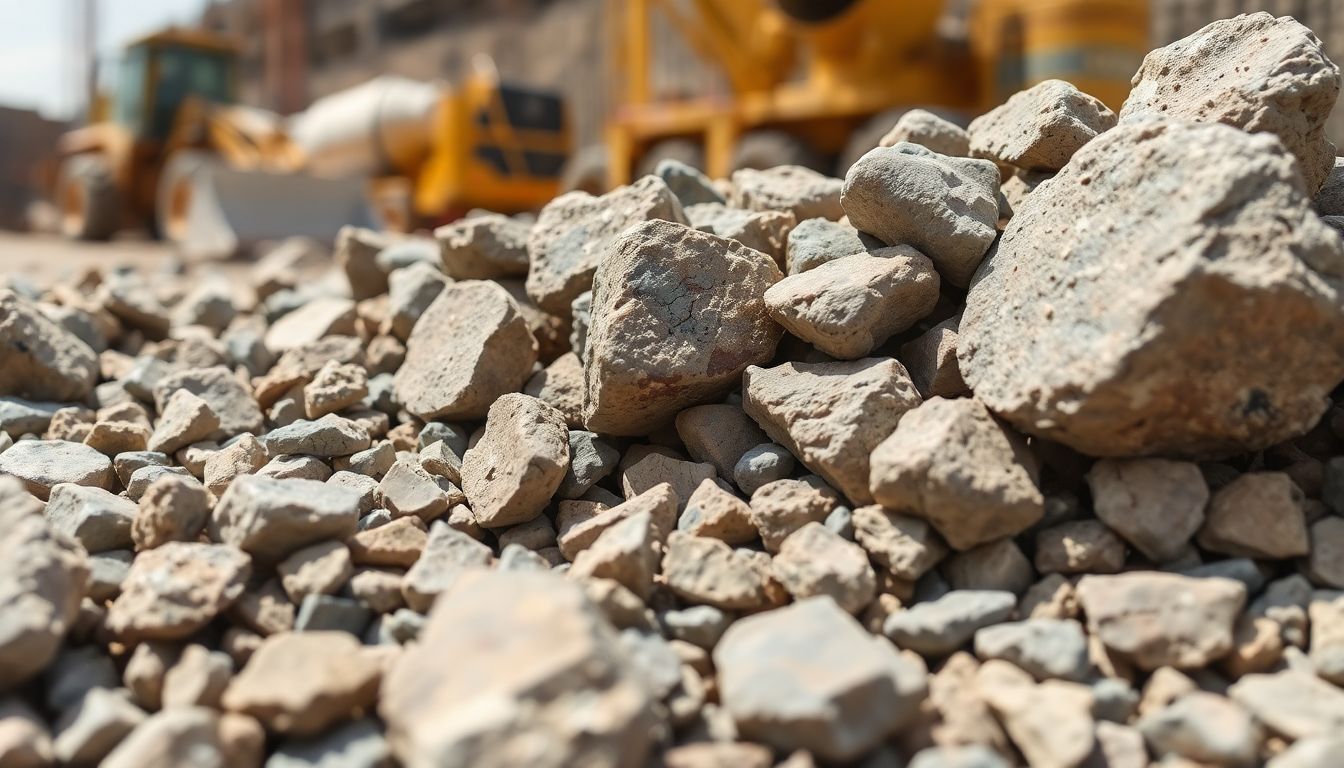
Introduction
In construction, choosing the right materials can make or break a project. Coarse aggregate is one such essential ingredient that helps create solid, durable structures. With urbanization and infrastructure projects booming, demand for top-grade aggregates has skyrocketed. This article dives into the world of coarse aggregate — what it is, its types, properties, and how to pick the best for your project.
What is Coarse Aggregate?
Definition and Composition
Coarse aggregate includes larger particles used in making concrete and asphalt. Usually, these pieces are above 4.75 mm (that’s about 3/16 of an inch). They come from natural sources like crushed stone and gravel, or from recycled materials like broken concrete. These sizeable chunks give strength and stability to construction mixes.
Importance in Construction
Without coarse aggregate, concrete and asphalt wouldn’t be the same. It acts like the backbone, providing strength and resisting heavy loads. It also helps reduce shrinkage and cracking as materials dry and settle. With stronger aggregate, your structures last longer and perform better.
Types of Coarse Aggregate
Natural Aggregates
Natural sources are the most common. Think rivers and quarries—river gravel, crushed stone, and quarry rock. These materials are plentiful and affordable in many regions. However, they can sometimes have impurities or inconsistent sizes, which need management.
Manufactured Aggregates
These come from processing materials like crushed concrete or lightweight materials. They are made through crushing, screening, and sometimes coating to make specific properties. Recycled concrete aggregate reduces waste and cuts costs. Light aggregates, made from materials like expanded clay or slate, are used when weight reduction is key.
Specialty Aggregates
Some projects require unique types. High-density aggregates are used to block radiation in hospitals or labs, while lightweight aggregates help in prefabricated panels and insulation. Their specialized properties open up many construction possibilities.
Properties and Characteristics of Coarse Aggregate
Physical Properties
Size distribution is crucial—particles should be uniform for better mixing. Shape matters too; angular pieces grip better than rounded ones. Texture influences how well the material bonds with cement or asphalt. Density and porosity affect durability, while moisture content can impact workability.
Mechanical Properties
Good coarse aggregate must resist crushing and hold up under stress. Toughness determines how well it stands up to impacts, especially during mixing or compaction. Abrasion resistance ensures the surface remains smooth over time, reducing wear and tear.
Chemical Properties
Chemical stability matters in different environments. Compatibility with cement prevents reactions that weaken concrete. Resistance to chemicals like acids, alkalis, or salts keeps the material enduring harsh conditions without breaking down.
Factors Influencing Coarse Aggregate Selection
Quality Standards and Regulations
Standards like ASTM and AASHTO set benchmarks for quality and safety. They specify tests for strength, cleanliness, and size. Certification ensures your aggregates meet these requirements, keeping your project safe and compliant.
Suitability for Specific Applications
Different uses require different properties. For concrete, strength and bonding are key. In asphalt, flexibility and abrasion resistance matter most. Drainage and landscaping need materials that won’t clog or decay over time. Know what your project demands and choose accordingly.
Cost and Availability
Often, local materials are cheaper and easier to access. But, sometimes imported or specialized aggregates might be worth the extra cost if they improve performance. Balance your budget with quality needs to find the best fit.
Applications and Uses of Coarse Aggregate in Construction
Concrete Production
Coarse aggregate forms the backbone of most structural concrete. It’s used in bridges, foundations, and buildings. It offers strength and stability, especially when mixed with cement and water for a sturdy finish.
Asphalt Pavements
Roads and parking lots depend on coarse aggregate to withstand traffic and weather. It keeps the surface durable and resistant to wear, ensuring a longer lifespan for roads.
Drainage and Landscaping
In gardens or highways, coarse aggregate helps manage water flow, preventing erosion and flooding. It’s also used decoratively in landscape design for a natural look.
Special Construction Projects
Heavy-duty projects, like radiation shielding walls, use dense, high-impact aggregates. Lightweight options are perfect for insulation or precast building parts, reducing wear and weight without sacrificing strength.
Best Practices for Handling and Storage
Proper Storage Techniques
Store aggregates in dry, clean areas. To prevent contamination, keep different sizes separated. Cover materials to stop moisture or dirt from affecting their quality.
Handling Procedures
Transport aggregates carefully to avoid segregation. When mixing, ensure uniform distribution. Proper handling can speed up construction and maintain high quality.
Tips for Contractors and Builders
Regularly test your aggregates for quality. Choose trustworthy suppliers and keep a close eye on standards. Consistent testing helps catch problems early and guarantees long-lasting results.
Conclusion
Coarse aggregate is vital in construction. It forms the foundation of strong, durable concrete and asphalt. Picking the right type and quality makes a difference in long-term performance. Always follow standards, handle materials properly, and source from reliable suppliers. When you understand the importance of coarse aggregate, you build projects that last.
Key Takeaways
- Coarse aggregate plays a crucial role in enhancing the strength of concrete and asphalt.
- Different types and properties suit different construction needs; understanding them makes a big difference.
- Following regulations and best practices ensures your project stands the test of time.